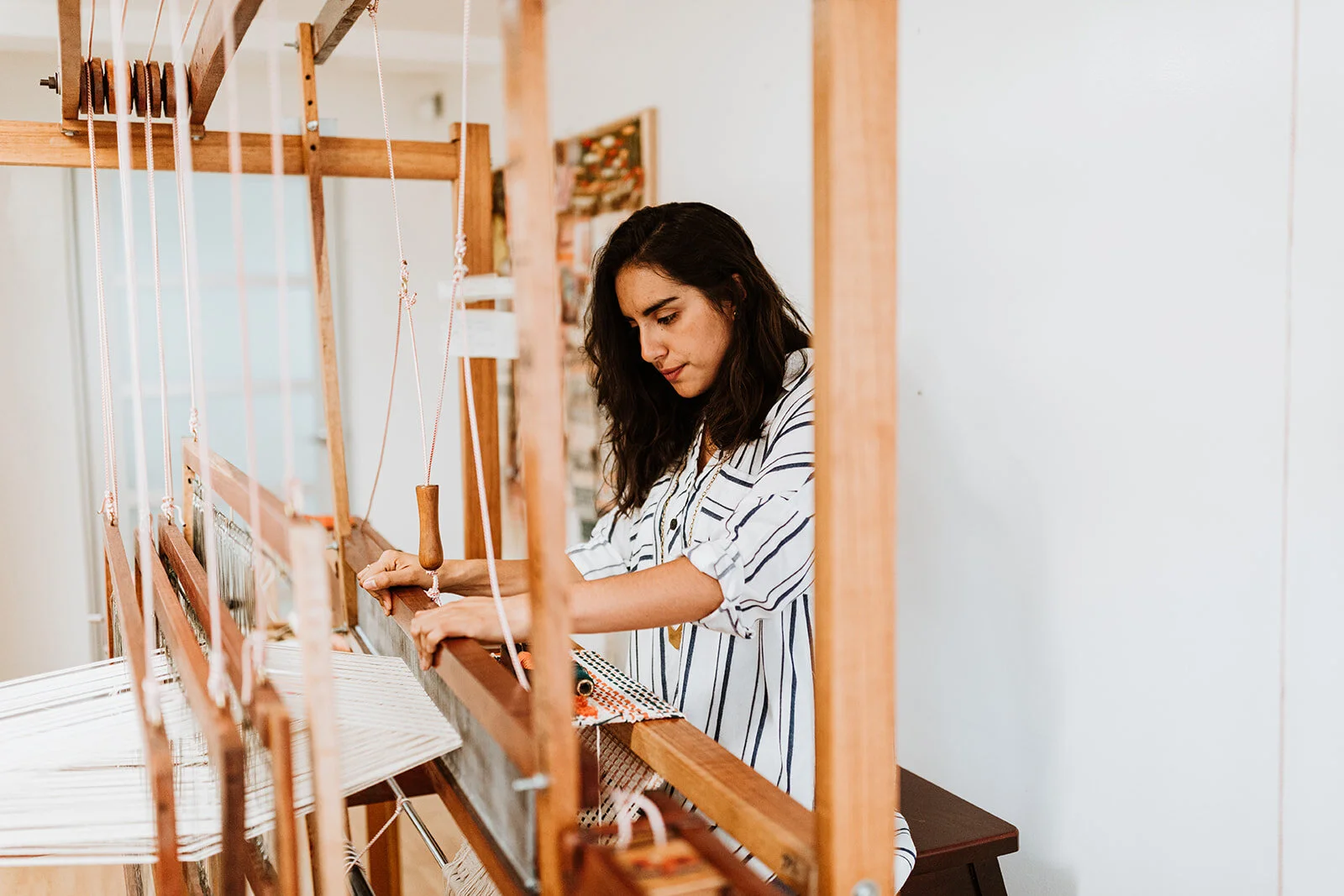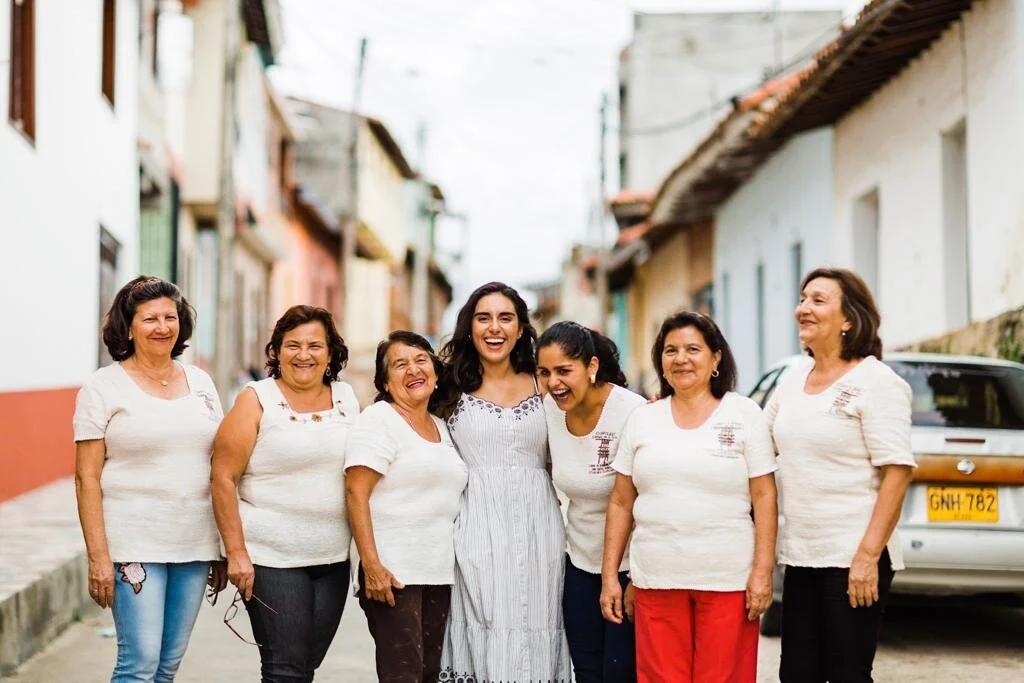Episode 04: Colorism, Colonization, and Textiles of Colombia with Tatiana Ordoñez
In Episode 04 of Art of Citizenry Podcast, Manpreet Kalra speaks with Tatiana Andrea Ordoñez Casallas of Zuahaza on how colonization continues to influence conversations around race and power in Colombia. They explore how culture heritage was first erased by Spanish colonizers, followed by years of internal conflict. Tatiana shares how she hopes to preserve cultural identity through textiles and art.
Photo by Ali Campbell
“Craft has a lot to tell about a person’s country and identity.”
It is often said that you can learn about the history of a community or culture through their textiles. However, that is only possible if those textiles have survived the human experience of war and conflict. In many countries, cultures have been erased by colonial homogenization or appropriated by selective extraction. During this episode, we explore the impact of Colonization on indigenous communities in Colombia, how the legacy of colonization continues to dictate social structures, and its impact on traditional art forms.
“The nostalgia of not knowing if I may be, a part of my ancestry is Muisca, I don’t know…we don’t see much culture left. Maybe some people have heritage of the Muisca people, but as a culture, it’s completely gone.”
In episode 4, I am joined by Tatiana Andrea Ordoñez Casallas of Zuahaza, a home textile studio based in Bogota, Colombia. Following an era of intense conflict, which continues to shape and affect Colombia today, Zuahaza seeks to participate in the peacemaking efforts to reunite and heal the country through art. Tatiana shares her journey with rediscovering the rich history of her country, and how that has influenced the way she approaches her business.
The Single Narrative
Colombia is more than the single story you have heard time after time about drugs and war. As a society, we often feel this need, at least in the United States, to put people in a box. But that can be really dehumanizing. It rejects how within a country people have different experiences based on a variety of factors including region, religion, social economic status, and so much more.
“We have a lot of problems like a lot of other countries, but there is another story to tell.”
We also see this often in the social impact space, where we create these single stories of people from countries and sometimes even continents, erasing historical context and the rich heritage of the various communities that reside within any given country or continent. This single narrative then reinforces harmful stereotypes.
What does racism look like in Colombia?
“There is not an easy way to describe racism in Colombia, but is not just a matter of skin color, it is also a matter of wealth distribution. The poorest regions of our country are either majority black or majority indigenous. In parallel these happen to be regions that are most affected by guerrilla conflicts. With this long history of conflict fueled by the drug trade (which is another article for another time), we have become a separated people. We made fences. We hired security guards. We built walls around our neighborhoods, and in all this, we prolonged the separation and discrimination against our fellow black and indigenous Colombians.”
Colorism + Whiteness
The National Museum of African American History & Culture has an excellent article on their website exploring the concept of whiteness, which they thoughtfully define as the way that white people, their customs, culture, and beliefs operate as the standard by which all other groups of are compared. In my understanding, this normalization then manifests itself in form of cultural hegemony, power dynamics, and racist power structures that have then been internalized by marginalized communities themselves. This makes whiteness something to strive for, often putting what is considered "global north" countries on a pedestal.
Unlike many of her peers who used education as an excuse to leave Colombia, Tatiana used the skills she built while studying textile design in the States to reconnect with her ancestral roots in Colombia. She moved back and began using her talents as a weaver to connect with other weavers and work to revive textile traditions lost to colonial destruction.
Resources + Links
Interested in reading some of the resources I reference during the episode? Check out these links:
[Resource Page] Whiteness by The National Museum of African American History & Culture
[Article] Black Lives Matter Movement: What does it look like in Colombia? by Tatiana Ordoñez
[Resource Page] Learn more about the Muisca civilization that was completely erased by Spanish colonizers in Colombia
[Podcast] Which is it? Cultural Appreciation or Appropriation
Connect with Zuahaza
Please make the effort to support small businesses — you can follow Zuahaza on Instagram and shop their textile collection online.
Thank You
This podcast is dedicated to creating a safe space to discuss and challenge topics surrounding how we each navigate our personal advantages and disadvantages. I want to thank Tatiana for joining me and sharing her experiences and valuable insights.
Finally, thank you for listening! Please subscribe, download, and leave a review for Art of Citizenry Podcast — I appreciate your love and support on this exciting journey!
Also, if you want to connect, please feel free to follow me and share your thoughts with me on Instagram @manpreetkalra.




